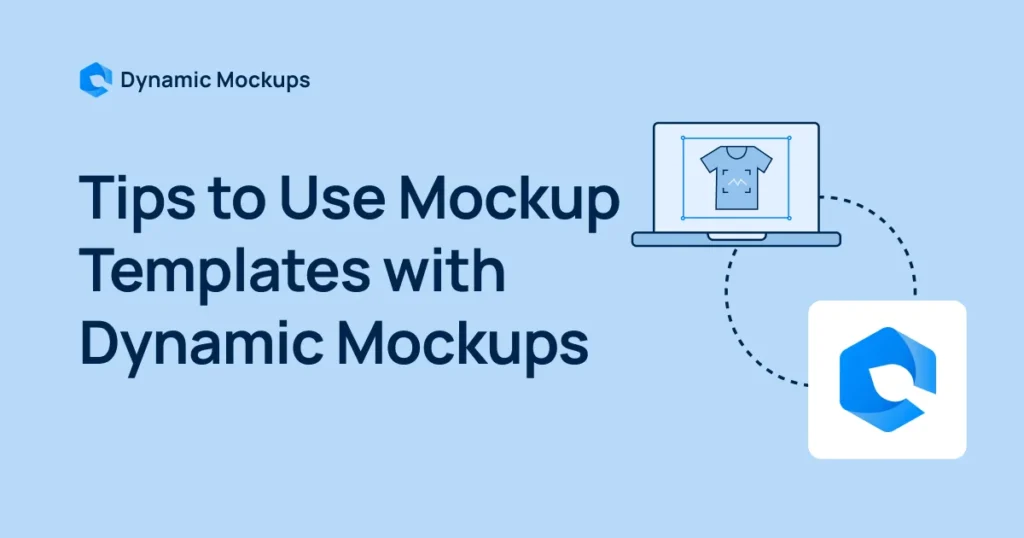Did you know that 70% of consumers form an opinion about a brand based solely on its product design, making mockups an integral part of design process.
They provide a low-risk way to test and refine design concepts before moving on to the final production stage.
But what is a mockup, and how to maximize its benefits?
Read on to learn how mockups can unlock the true potential of your products.
Start creating for Free!
Showcase your E-commerce products like big brands, without costing a fortune
What Is a Mockup?
A mockup is a realistic representation of a design or product you create before producing it.
Thus, it should accurately represent how the design will look on the product, including:
- The correct colors,
- How the fabric looks and
- How the design fits different product shapes and sizes.
For example, a design might look great on a flat image but stretch out or look distorted on an actual t-shirt.
Mockups can be digital or physical and span multiple categories, such as print-on-demand services, eCommerce, website or app designs, etc.
💡 ProTip:
Dynamic Mockups revolves around high-quality PSD files to help you generate realistic mockups.
Thus, you can be sure your PSD files are correctly formatted and avoid problems such as distorted images or incorrect layers.
Consequently, you’ll have full control over your mockups, making sure your designs look polished and professional.
When you upload your custom Photoshop templates, our tool will convert them into an online mockup that you can easily customize to reflect your brand and better resonate with your target audience without needing Photoshop.
Mockups vs. Wireframes vs. Prototypes
Mockups, wireframes, and prototypes are tools for creating and testing designs during the product development process.
While they share some similarities, there are important differences between them.
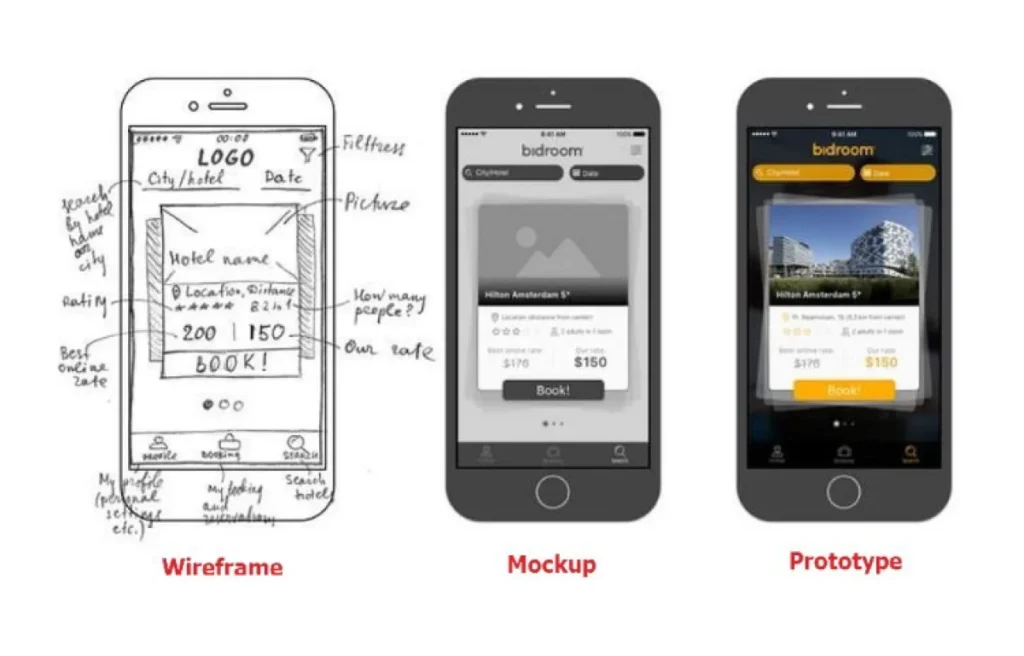
✨ Wireframes – Simpler, usually black-and-white outlines or sketches of a product.
They outline the basic structure and layout of a product or web page
✨ Mockups – They give an idea of a product’s appearance and contain colors, graphics, and text.
In addition, they resemble a finished product much more than wireframes and provide multiple variations of the same product.
✨ Prototypes – They test product functionality and user experience and are typically interactive and more advanced than wireframes and mockups.
Overall, mockups, wireframes, and prototypes serve different purposes, and
belong to different stages of the product development process.
6 Most Common Mockup Types
Mockups have wide and versatile uses, so it’s no surprise that they cater to various industries and come in many shapes and sizes.
✨ Product Mockups
Product mockups are realistic representations of a product, providing a detailed and accurate preview of how the final product will look and function.
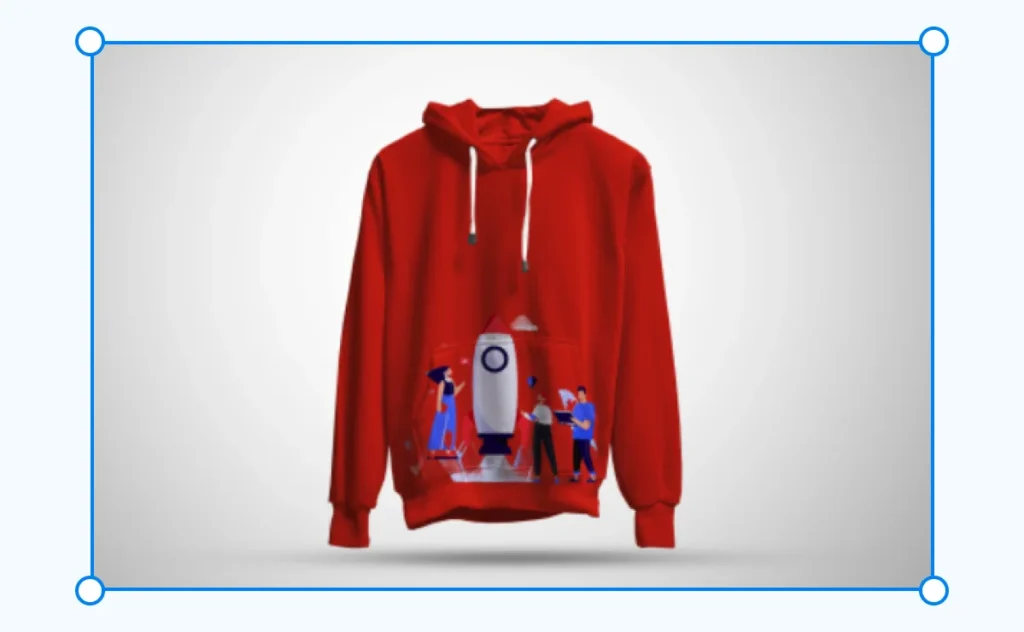
They can cover everything from clothing, including a white or black t-shirt mockup, to electronics, household goods, and more.
As such, they find great use in POD businesses, eCommerce, advertising, catalogs, and marketing.
💡 ProTip:
Did you know that Dynamic Mockups has an evergrowing FreeTemplate Library with a variety of mockups for T-shirts, Hoodies, Wall art, Pillows, Blankets, Tote Bags, Phone Cases, etc?
Furthermore, you can do the bulk creation and add multiple color combinations and shades to your design?
This way, all the changes will be automatically applied to all designs, saving you precious time. It takes about 10 seconds for 100 Mockup variations.
If you want to see how to create mockups in only 3 steps using our tool, hop on to our blog, 5 Tips To Create Product Mockups Easily, for more details.
✨ Print Mockups
Print mockups show how the printed material will look after printing. They are helpful in creating visuals for flyers, banners, ebooks, and other printable marketing materials.
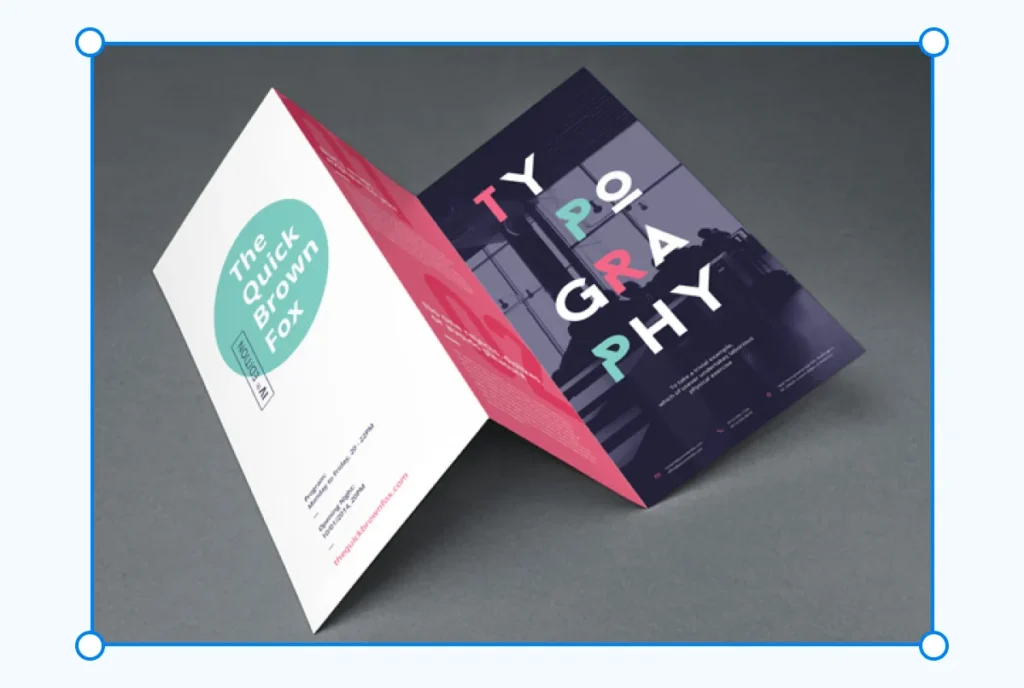
Furthermore, they are handy for checking and testing font size, legibility, and overall design layout.
✨ Packaging Mockups
They show how a product will look when it’s packaged for retail sale. They may include boxes, bottles, plastic bags, paper bags, and other packaging designs.
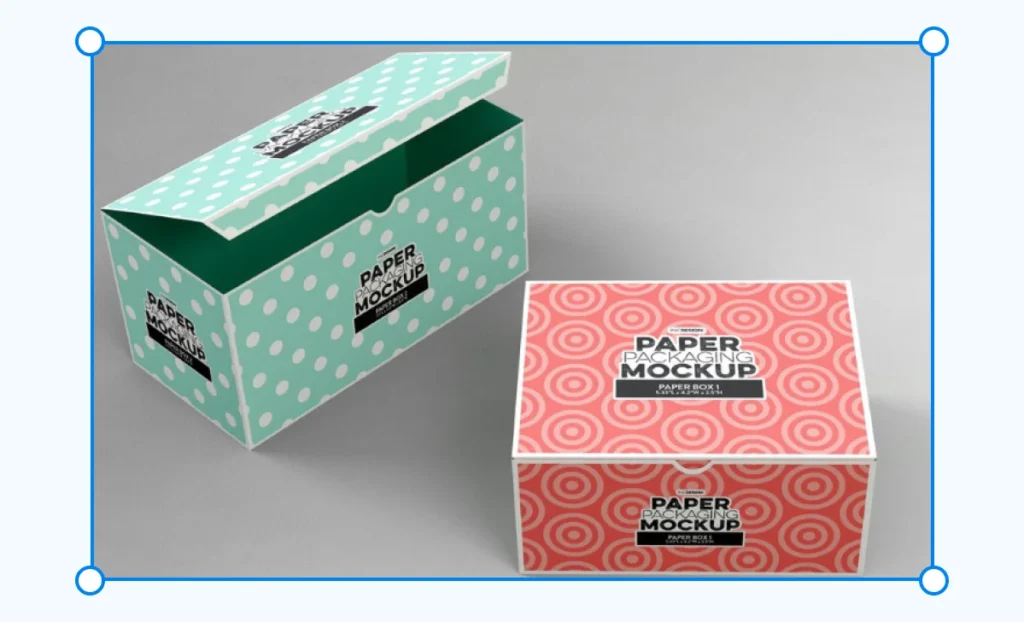
Packaging mockups represent a great way to incorporate your brand and logo and enhance visibility.
In addition, you’ll be able to choose font size and color, background color, and material.
✨ Social Media Mockups
This type of mockup allows you to see how your product or service will appear on social media.
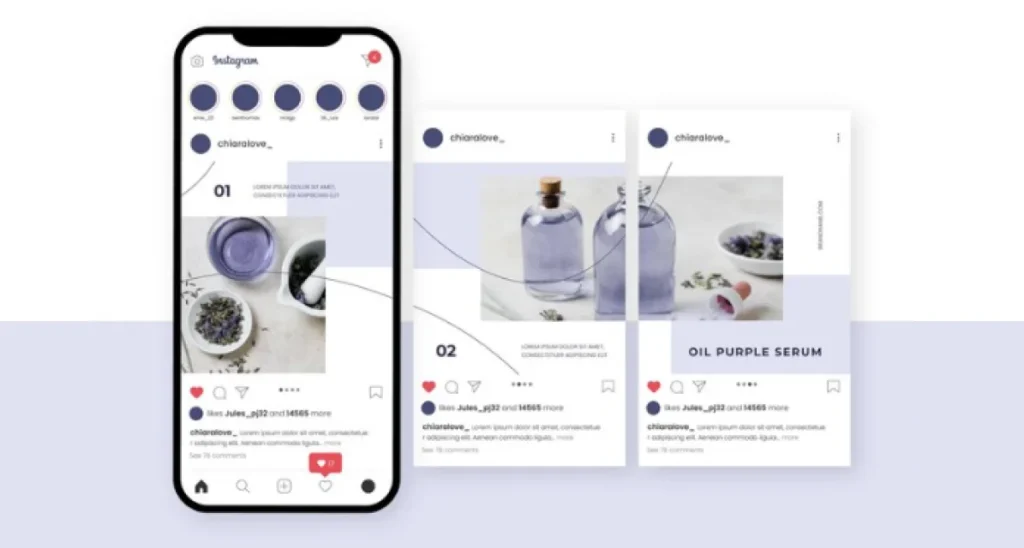
Depending on your goal, you can testi different types of:
- Layouts, profile images, and cover photos.
- Posts, such as text-only posts, image posts, or video posts.
- Landing pages or website designs on social media platforms.
✨ Branding Mockups
Branding mockups combine visual elements such as logos, typography, color palettes, and graphic designs that represent your business.

Thus, you can use them to see how your brand identity will look on various marketing materials and ensure consistency across all channels.
✨ Device Mockups
They showcase how a product will look on different devices, such as a smartphone or tablet, making them an integral part of website and app design projects.
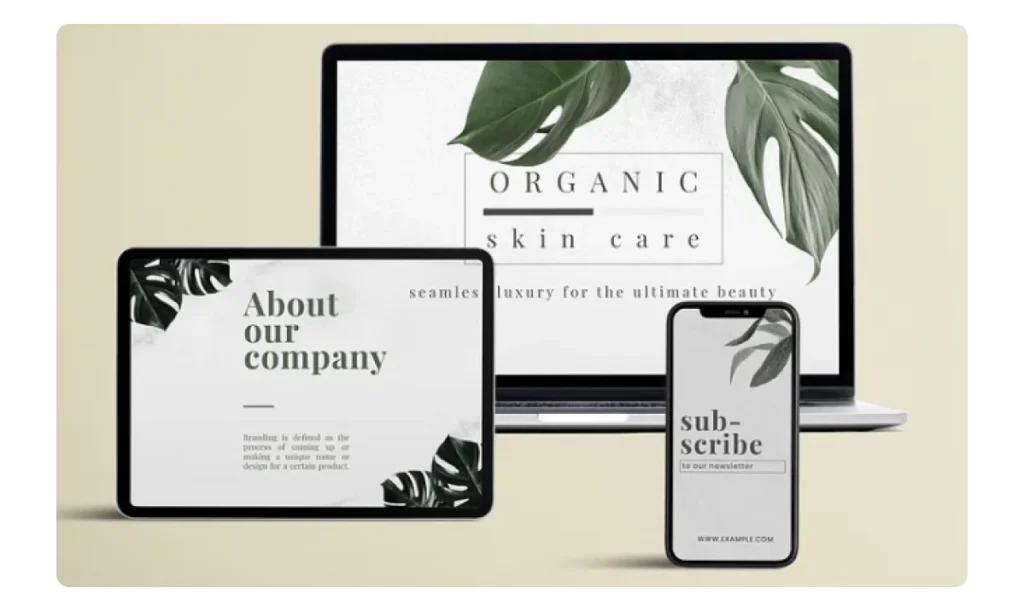
Furthermore, you can use them in user testing to get feedback on how users interact with the design on different devices.
Since our primary focus is product mockups, let’s see in more detail why they are imperative if you run a POD or eCommerce business.
Why Product Mockups Are a Must?
Product mockups play a pivotal role in nudging potential buyers to make a purchase because they help them visualize the final product and how they can use it.
Furthermore, they offer additional benefits:
- Realistic representation – High-quality mockups will provide a realistic and detailed product preview from different angles and perfect lighting.
Consequently, they can decrease the likelihood of returns and customer dissatisfaction.
- Cost-effective solution – They can save time and money in the long run by identifying potential issues during the design stage.
Furthermore, they reduce production costs because you only get into production once you’re satisfied with the design.
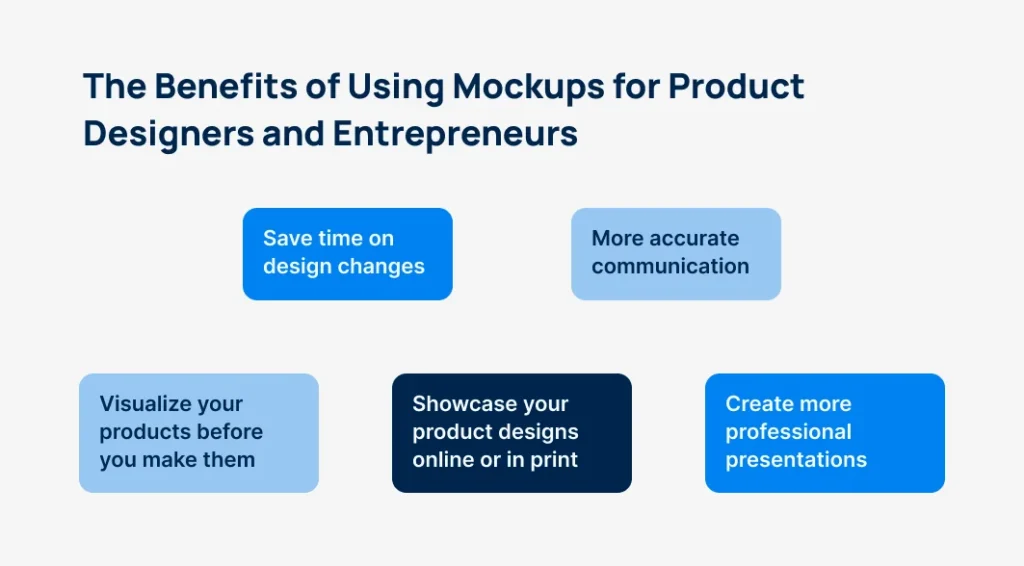
- Effective communication – Mockups provide an effective way to communicate design ideas and strategies to buyers, stakeholders, etc., ensuring that everyone involved has a clear idea of what the product will look like.
- Competitive advantage – In the sea of online products, top-quality product mockups can help you stand out from the competitors and attract more customers.
3 Elements of a Product Mockup To Pay Attention To
In order to create a top-notch product mockup, certain elements must find their place in the design process:
1. Layout
Layouts can significantly impact your product’s overall look and functionality, and help you identify the most important elements and give them prominence.
The images or text you incorporate should be balanced and proportionate in order not to disrupt user experience.
In addition, the layout shouldn’t be overwhelming with too many design elements.
For example, combining multiple patterns or too many colors might not be a good idea. Instead, choose 1 or 2 key elements you wish to highlight and give them “a breathing space.”
💡 ProTip:
Dynamic Mockup’s Print Area feature allows you to resize and relocate assets within the Print Area effortlessly.
Thus, you can move and resize assets and set fitting parameters within the Print Area according to your specific requirements.
Furthermore, the tool automatically calculates post-adjustments, the width, and height of the Design Asset, allowing for precise placement and size within mockups.
2. Colors and Contrast
The colors you use in a product mockup should be the same as the ones you wish to have in the final product.
This way, you’ll get a true representation of what the final product will look like.
Using the same colors will create brand recognition because you can align them with your logo colors or various marketing materials.
Furthermore, it will ensure that the colors are consistent across all aspects of your design, from the mockup to the final product.
Creating product mockups enables you to experiment with different colors, shades, hues, and contrast till you find a perfect solution.
💡 ProTip:
Dynamic Mockups has integrated Printful/Printify color combinations and introduced a color picker ribbon for an almost infinite variety of colors and hues.
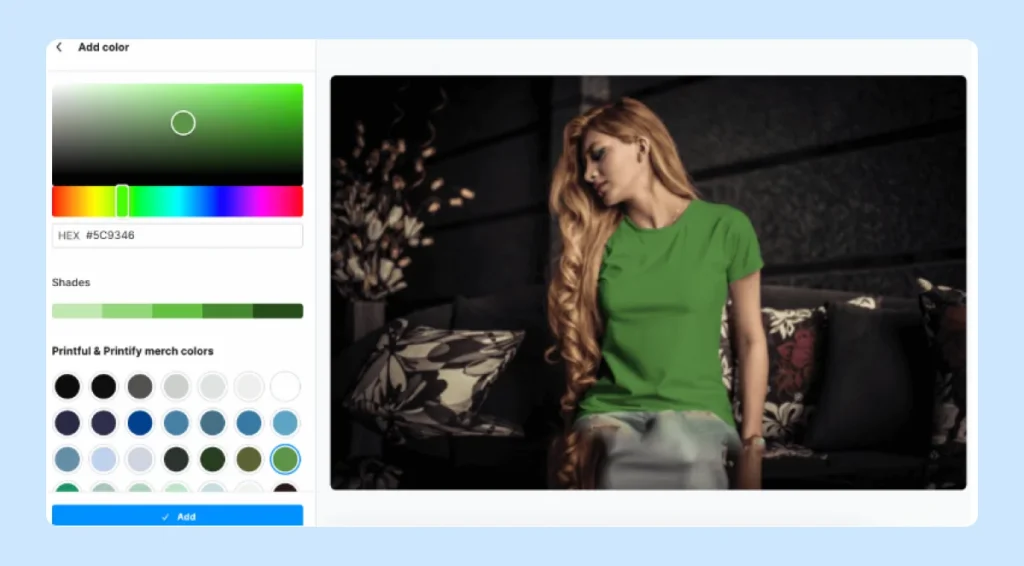
This provides abundant options to change and edit colors to create multiple designs easily and quickly.
3. Typography
If you plan to incorporate textual content into your products, mockups will be of great assistance and provide you with a canvas to play with different font sizes, colors and styles.
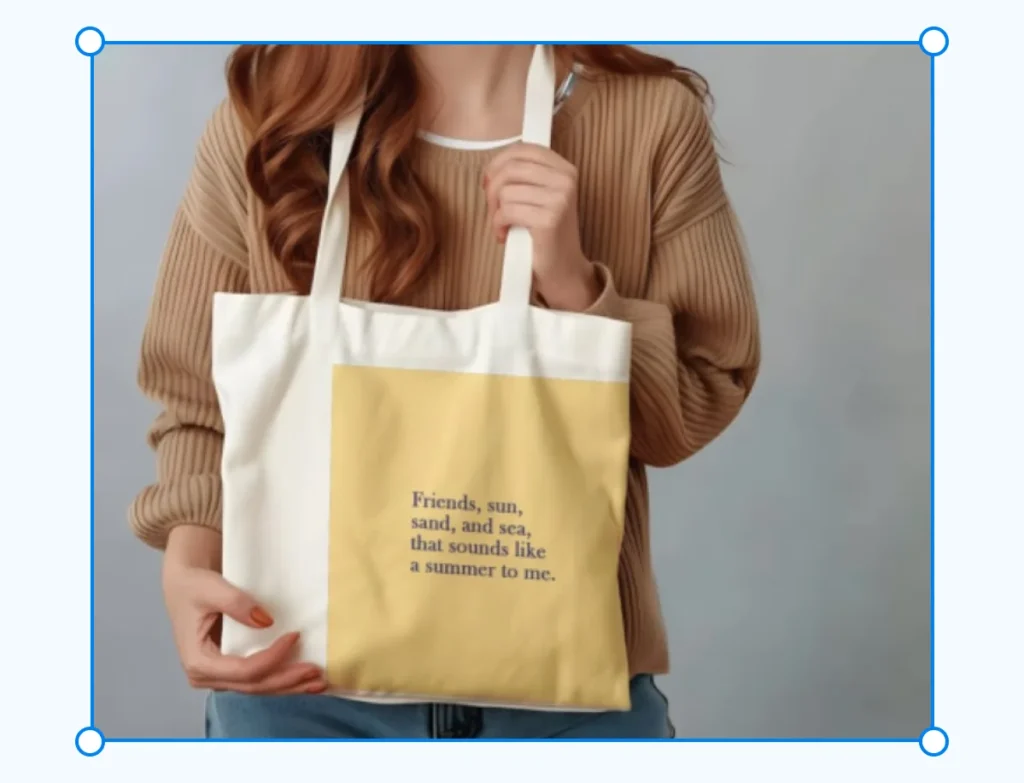
3 Best Apps To Create Product Mockups
Mockup generators can widely vary depending on their pricing plans, customization options and technical knowledge you need to use them.
However, most of them enable you to generate mockups easily and quickly by offering pre-built customizable templates.
1. Dynamic Mockups – An automated mockup generator tool for print-on-demand businesses that helps you generate a large number of high-quality mockups.
Furthermore, it has APIs for building custom integrations or apps on top of the platform and automating POD operations.
Thus, you can automatically generate a realistic mockup your potential buyers can view on the website or eCommerce platforms.
2. Vexels – An online design platform for creating mockups and logos. It also allows you to create, customize, and manage your online store.
3. Canva – An online platform offering pre-designed templates and stock images ranging from logos, infographics, prints, photo collages, etc., to social media.
It also has text-editing capabilities.

Wrapping It Up
Choosing the right mockup generator for your business can not only streamline your design processes but also provide cost- and time-effective solutions.
Dynamic Mockup differentiates from similar tools by offering unique features to scale and automate your business.
Let’s check what those are.
How Can You Enhance Your Product Mockups Effortlessly With Dynamic Mockups?
Dynamic Mockups helps you autogenerate product mockups for your eCommerce store, solving the inefficient and expensive process of creating mockups manually.
So, what makes our tool so special?
Besides our stellar bulk creation feature and open API, with Dynamic Mockups,
🔥 You can edit your designs thanks to various editing tools, including:
- Various blending modes in your Photoshop Templates for a more realistic mockup.
- Smart Object transform modes to skew, distort, and rotate items and change perspective.
- Shared design layout that ensures that the same position and size will be applied to all design assets.
🔥 You can access our latest feature, Design Library, which allows you to store all your designs in one place without re-uploading them.
Thus, you can use the same design assets across various mockups effortlessly.
And we have more valuable features coming your way – Etsy and Shopify integrations, as well as Zapier and Make to automate your workflow.
Enticed to learn more?
Start with Dynamic Mockups for free and create scroll-stopping product mockups.
Start creating for Free!
Showcase your E-commerce products like big brands, without costing a fortune
Keep Learning
We’ve Tried 6 Placeit Alternatives – Here’s Our Feedback


